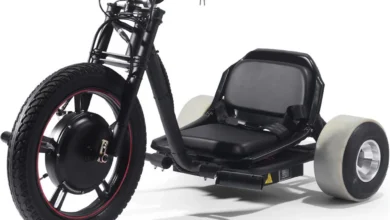The Definitive Guide to Preeminent 12V 300ah Battery

If you are looking for a reliable power source for your marine adventures or off-grid living, look no further than the 300ah Battery. This versatile battery is designed to provide consistent power over an extended period, making it perfect for various applications. This ultimate guide will explore everything you need to know about your 300-ah deep cycle battery, including its significance, maintenance tips, troubleshooting common issues, and the future of deep cycle battery technology.
Understanding the Basics of Deep Cycle Batteries
Deep cycle batteries distinguish themselves through their capability to deliver a consistent power level over prolonged periods. This characteristic starkly contrasts the primary function of starter batteries, which is to unleash significant bursts of energy in a short span, primarily for starting engines.
- Deep cycle variants are engineered with thicker lead plates and a unique chemical composition that allows for repeated discharge and recharge cycles at a deeper level without compromising the battery’s integrity or performance.
- This design makes them supremely suitable for applications where energy needs are sustained rather than instantaneous. They excel in environments where the battery is expected to power devices over extended periods, such as powering electronics on a boat or providing the necessary energy for appliances in an off-grid setup.
- The ability to discharge deeply and recharge effectively without suffering damage is a critical feature that sets deep cycle batteries apart from their starter counterparts. The key to their functionality is the understanding that deep cycle batteries are not merely about energy storage but the quality of power delivery over time.
- Their construction ensures that even when significantly drained, they can recover through proper recharging practices. This resilience and durability make them essential for those relying on consistent and reliable power sources away from traditional power grids.
In utilising a deep cycle battery, users invest in a product designed for endurance, capable of supporting their energy requirements through thick and thin, embodying a solution not just for the present but for the foreseeable future in energy storage and utilisation.
The Significance of 300 Amp Deep Cycle Battery
The 300 Amp Deep Cycle Battery is a crucial indicator of its ability to sustain power output over time. This figure signifies that the battery can supply 75 amperes of current continuously for an hour or a proportionate level of current over a longer duration, making it an indispensable component for various energy-reliant setups.
Particularly in scenarios where a steady and reliable power source is paramount, such as in marine environments or remote off-grid locations, the capacity of a 300-ah battery ensures that essential systems remain operational without interruption.
For enthusiasts and professionals alike who rely on electronic equipment, lighting, and other power-dependent devices, understanding the significance of this capacity is vital.
It not only influences the selection process, ensuring compatibility with specific energy requirements but also assists in effectively planning energy consumption and management strategies. The adeptness of the 300-ah battery to hold and dispense a substantial amount of energy makes it the backbone of systems where power reliability cannot be compromised.
Moreover, the choice of a battery with a 300-ah rating is informed by considering operational endurance and efficiency. It represents a balance between size, weight, and energy storage capacity, offering a pragmatic solution for those needing considerable energy reserves without the bulk or weight of larger-capacity batteries.
Choosing the Right 300-ah Battery for Marine Use
Selecting an appropriate 300-ah deep cycle battery for marine environments requires meticulous attention to several critical factors beyond mere capacity. It’s imperative to opt for a battery that boasts marine-grade durability and can endure the rigorous conditions of marine settings, including resistance to corrosion from saltwater and the ability to withstand high vibration levels without performance degradation.
Compatibility with marine electronics is paramount. Ensure your chosen battery seamlessly integrates with your vessel’s specific electronic systems. This includes navigational aids, communication devices, and other critical equipment that depends on reliable power sources.
Battery dimensions and weight also play a vital role, particularly in marine applications where space might be at a premium and weight distribution is crucial for maintaining the boat’s stability and performance.
Consideration should be given to the type of battery technology. Lead-acid batteries, including AGM (Absorbent Glass Mat) and Gel varieties, are traditional options offering robust performance. However, advancements in lithium-ion technology present a lighter, albeit more expensive, alternative with superior energy density and a longer lifecycle.
In essence, the selection process should focus on the immediate power requirements and how the battery’s characteristics align with the broader operational demands and environmental challenges of marine usage.
Prioritising features such as durability, compatibility, and the right technology type ensures that your marine adventures are powered by a reliable, efficient, and long-lasting 300-ah deep cycle battery, adeptly tailored to the unique difficulties of marine use.
The Role of a 300-ah Battery in Off-Grid Living
Embarking on an off-grid lifestyle demands a dependable and robust energy solution, and the 300-ah deep cycle battery emerges as a critical component in this scenario. These batteries offer the flexibility to harness renewable energy sources, such as solar panels or wind turbines, efficiently storing the power generated during daylight hours or windy conditions for use when direct energy generation isn’t possible.
For individuals and families committed to sustainable living away from conventional power grids, the 300-ah battery’s storage capacity becomes an invaluable asset. It supports various daily needs, from lighting and refrigeration to charging mobile devices and powering small appliances, all without relying on fossil fuel-based generators.
These batteries’ adaptability to a range of environmental conditions and compatibility with various renewable energy setups make them a cornerstone for off-grid energy systems. Integrating a 300-ah deep cycle battery into an off-grid energy solution allows scalability. As energy needs grow or change, additional batteries can be added to the system, providing greater capacity and ensuring that evolving energy requirements are met.
This scalability underscores the deep cycle battery’s role as a power source and a building block for a resilient and flexible off-grid energy infrastructure, poised to support sustainable living practices in diverse settings.
Maintenance Tips for Your 300 Amp Hour Deep Cycle Battery
Maintaining your 300 Amp Hour Deep Cycle Battery is paramount to ensuring it continues to operate efficiently and effectively over its lifetime. Regular maintenance extends your battery’s lifespan and helps preserve its capacity to store and deliver power when needed.
- One fundamental aspect of battery care involves periodically checking and maintaining the correct water level in lead-acid batteries, which should be done with distilled water to avoid introducing impurities.
- Additionally, it’s crucial to keep the battery terminals clean and corrosion-free. A simple solution of bicarbonate of soda and water can be applied to neutralise and remove any corrosive build-up, followed by a rinse with clean water and drying.
- Ensuring a secure and corrosion-free connection improves power transmission efficiency and reduces resistance that can lead to energy loss. It is equally important to avoid overcharging and deep discharging. Employing a reliable charge controller, especially in setups that involve renewable energy sources, can help manage the charging process, ensuring the battery is neither undercharged nor overcharged.
- It is also advisable to perform regular load tests to assess the battery’s ability to hold and deliver power. These tests can highlight potential issues early, enabling corrective action before they escalate into significant problems.
By incorporating these maintenance strategies into your routine, you can significantly enhance the performance and extend the service life of your 300-ah deep cycle battery, ensuring it remains a dependable power source for your needs.
Empathetic the Life Cycle of Your 300-ah Battery
The longevity and performance of a 300-ah deep cycle battery are intimately linked to its life cycle. This concept encapsulates the total number of complete charge and discharge cycles a battery can undergo before its capacity wanes. Various factors influence this life cycle, including the manner and intensity of its usage, the depth of each discharge, and the conditions under which it is recharged and stored.
Typically, deep discharging, where a battery is drained to a low level of its capacity, can significantly shorten its lifespan by imposing undue stress on its internal components. Conversely, maintaining a regimen of shallow discharges, followed by timely recharges, can preserve and extend a battery’s functional life.
Environmental conditions also play a critical role; exposure to extreme temperatures, either hot or cold, can adversely affect a battery’s chemistry and hasten its decline. Implementing best practices in battery maintenance—such as regular cleaning of terminals, ensuring optimal charge levels, and avoiding exposure to adverse conditions—can mitigate these detrimental effects, enhancing the battery’s durability and operational lifespan.
Engaging in these prudent management and maintenance practices prolongs the battery’s life cycle and sustains its efficiency in energy storage and output. Therefore, users must cultivate a deep understanding of these dynamics to maximise the utility and longevity of their 300-ah deep-cycle batteries.
Troubleshooting Common Issues with Deep Cycle Batteries
When encountering performance issues with your 300-ah deep cycle battery, several common culprits may be to blame. Sulphation, a process where lead sulphate crystals accumulate on the battery plates, significantly hinders the battery’s efficiency.
This issue primarily arises from prolonged storage without charging or maintaining the battery in a discharged state. Consider employing a specialised battery charger that delivers a high-frequency pulse to break down the lead sulphate crystals to counteract sulphation.
Undercharging and overcharging present additional challenges. An undercharged battery suffers from acid stratification, with a higher concentration at the bottom, leading to sulphation and diminished capacity.
Conversely, overcharging leads to excessive heat, which can cause water loss and plate damage. A smart charger that adjusts the charge according to the battery’s needs can mitigate these issues, ensuring optimal charging without the risk of damage.
Excessive discharge or draining the battery beyond recommended levels can also compromise its lifespan and performance. Implementing a voltage monitor can provide real-time alerts before the battery reaches a critically low level, allowing for timely recharging and preventing damage.
Finally, understanding the battery’s response to environmental factors is crucial. Extreme temperatures can exacerbate existing issues or introduce new ones, such as accelerated self-discharge in high temperatures or reduced capacity in cold conditions. When possible, storing the battery in a temperature-controlled environment can help maintain its efficiency and prolong its service life.
The Future of 300ah Deep Cycle Battery Technology
As we peer into the horizon of 300ah Deep Cycle Battery technology, it’s clear that innovation holds the key to transformative advancements. Emerging materials and novel battery designs are at the forefront of research, aiming to redefine what’s possible in terms of energy density, charge cycles, and environmental sustainability.
- The exploration of alternative chemistries, such as solid-state batteries, presents an exciting avenue with the potential to significantly enhance safety and energy storage capabilities, heralding a new era for deep-cycle applications.
- Simultaneously, advancements in lithium-ion technology continue to push the boundaries of efficiency and lifecycle, offering glimpses of future batteries that are lighter, more robust, and capable of holding charge for longer durations. Integrating smart technology into battery systems is another area of rapid development.
- This involves incorporating intelligent monitoring and management systems that optimise performance, extend lifespan, and predict maintenance needs, ensuring that batteries operate at peak efficiency.
- Moreover, the drive towards greener solutions is spurring the creation of eco-friendly battery alternatives that minimise the use of harmful materials, reduce carbon footprint, and are easier to recycle. This shift aligns with global sustainability goals and opens up new possibilities for battery deployment in environmentally sensitive areas.
In sum, the evolution of deep cycle battery technology is poised to revolutionise energy storage, making it more efficient, sustainable, and adaptable to the changing needs of modern society and industry.
Conclusion
Navigating the complexities of choosing and maintaining a 300ah Battery need not be daunting. Armed with a comprehensive understanding of what sets deep cycle batteries apart, the nuances of selecting a battery tailored to specific needs, and the significance of adhering to best practices in maintenance, individuals can maximise the efficiency and longevity of their batteries. It’s imperative to recognise that the journey with a deep cycle battery extends beyond the initial purchase; it encompasses a commitment to regular care and informed usage.
FAQs
1. What is the expected lifespan of a 300ah Battery?
The durability of a 300ah Battery depends on several variables, including the frequency of use, adherence to proper maintenance routines, and charging methods. When maintained correctly, these batteries can provide reliable service for several years, offering users a solid return on investment.
2. Can a deep cycle battery be utilised for starting engines?
Though primarily engineered for prolonged energy discharge rather than short, high-intensity bursts, a deep cycle battery can, in certain situations, be used for starting purposes. It is critical, however, to consult the manufacturer’s guidelines to ascertain suitability for such applications and avoid potential damage to the battery.
3. How do deep cycle and starter batteries differ in functionality?
The main difference between these two battery types is their design and intended use. Deep cycle batteries are optimised for a steady and extended release of power, making them ideal for powering electronics over long durations. Starter batteries, on the other hand, are designed to quickly deliver a significant power surge, suitable for igniting engines. Understanding this distinction is key to selecting the correct battery type for your requirements.



